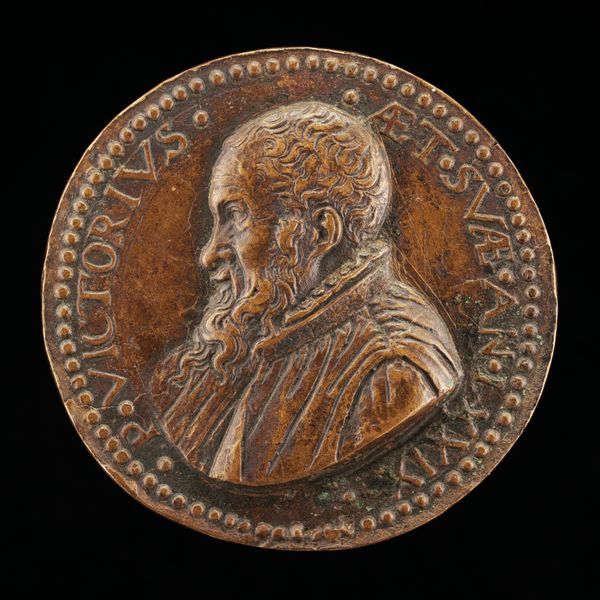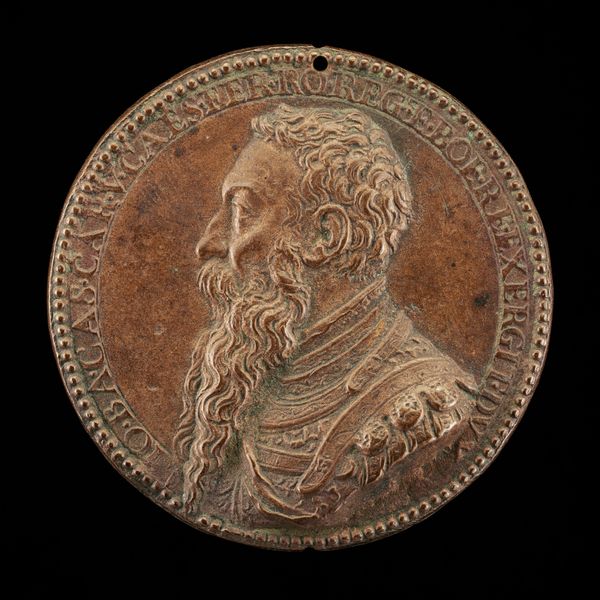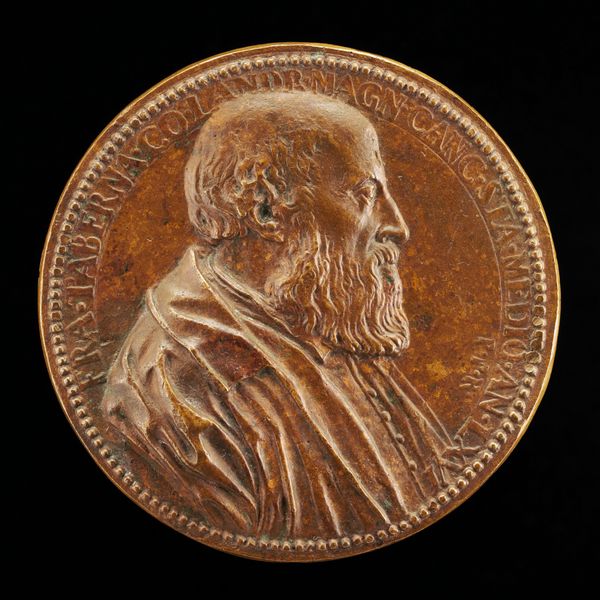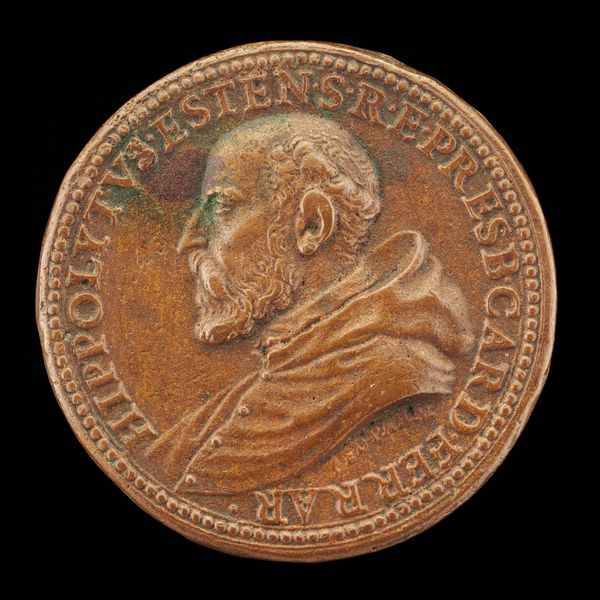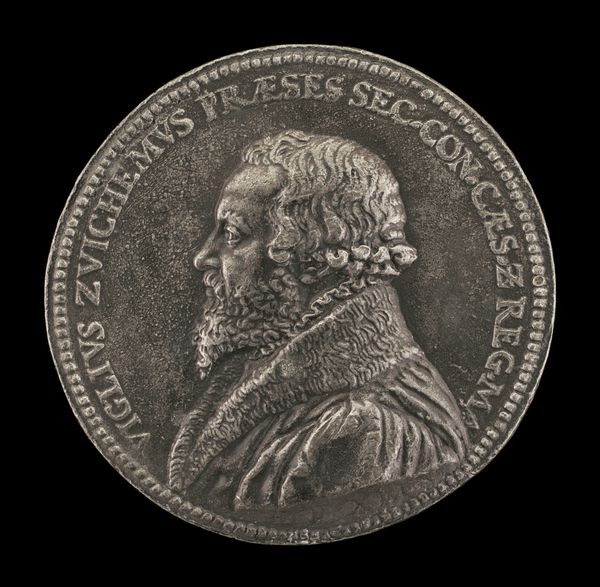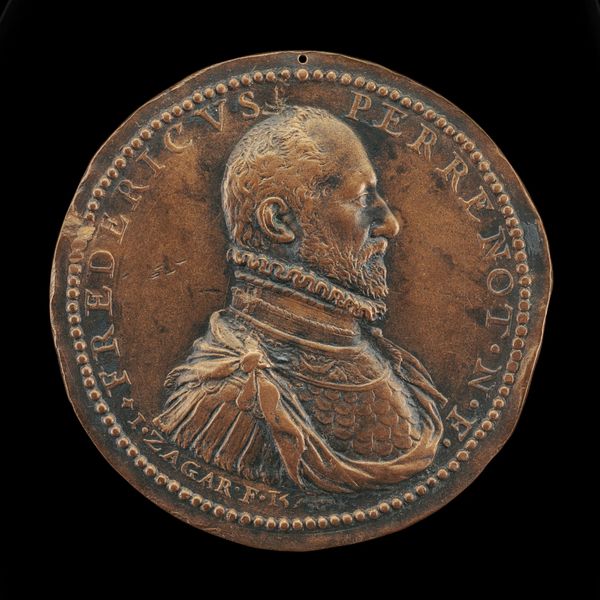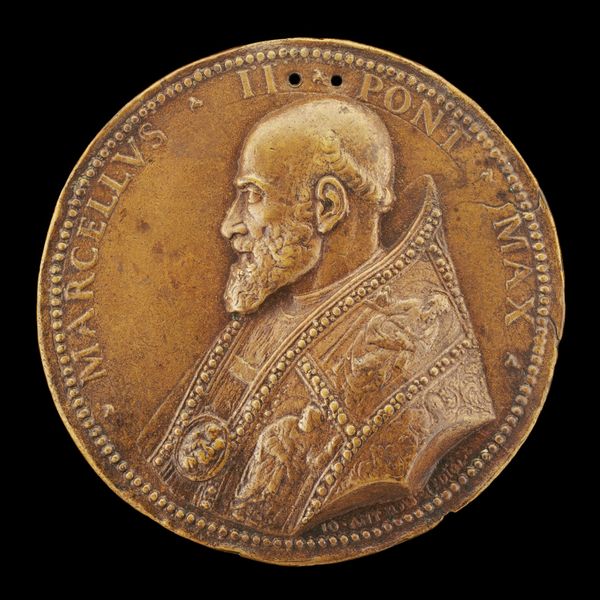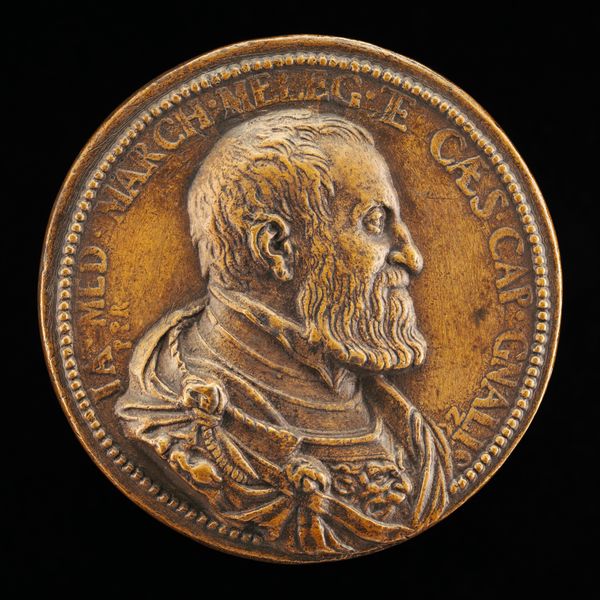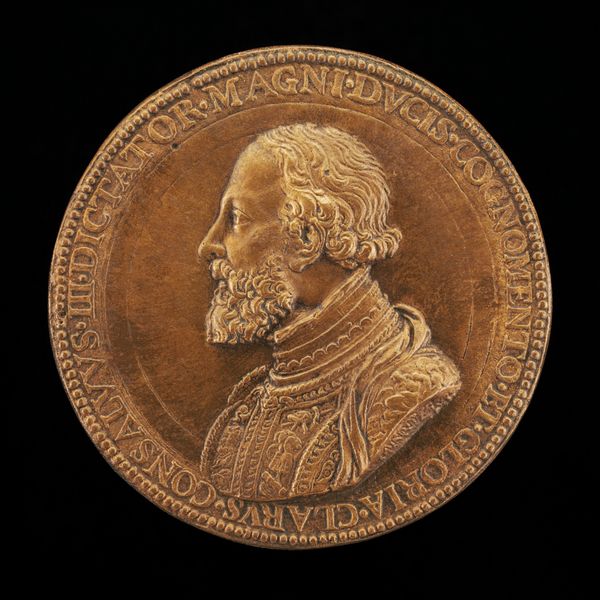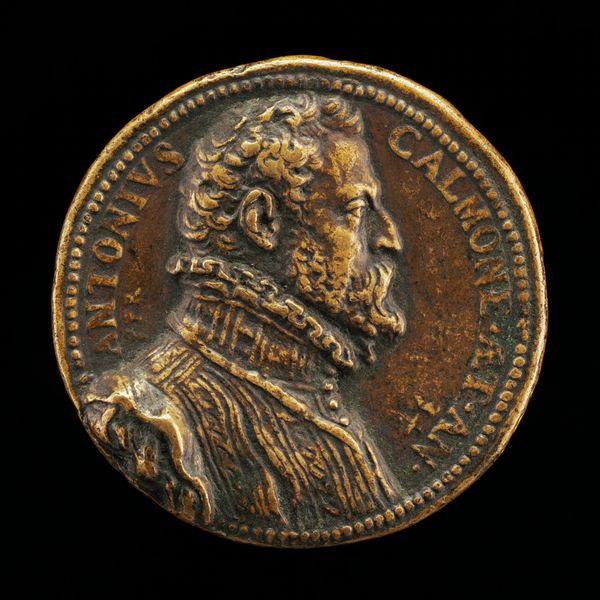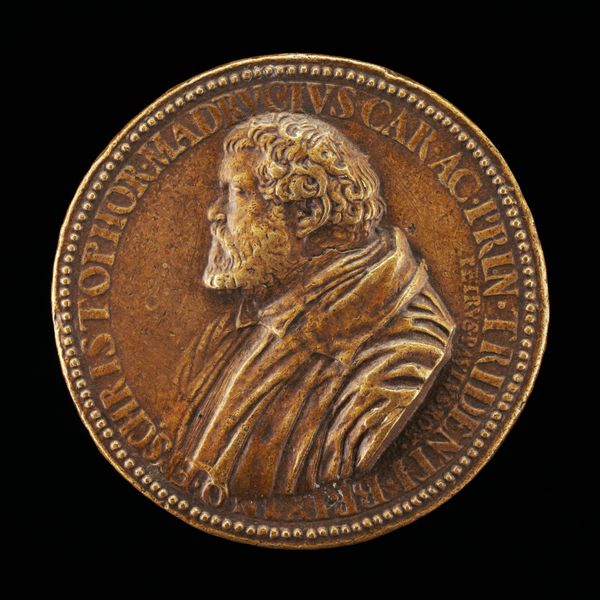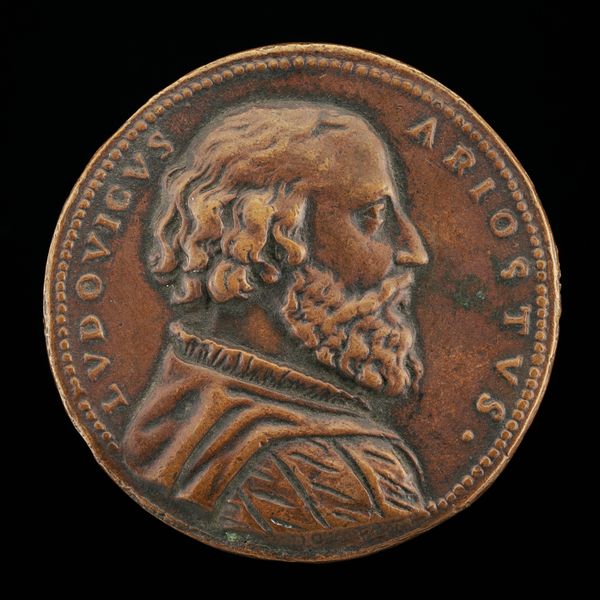![Jean Parisot de la Vallette, 1494-1568, Grand Master of Malta 1557-1568 [obverse] by Federico Cocciola](/_next/image?url=https%3A%2F%2Fd2w8kbdekdi1gv.cloudfront.net%2FeyJidWNrZXQiOiAiYXJ0ZXJhLWltYWdlcy1idWNrZXQiLCAia2V5IjogImFydHdvcmtzL2JlYjQxNWU2LWViZDMtNDRiNC04NjMxLTNiMjlkZWIwYjJlZS9iZWI0MTVlNi1lYmQzLTQ0YjQtODYzMS0zYjI5ZGViMGIyZWVfZnVsbC5qcGciLCAiZWRpdHMiOiB7InJlc2l6ZSI6IHsid2lkdGgiOiAxOTIwLCAiaGVpZ2h0IjogMTkyMCwgImZpdCI6ICJpbnNpZGUifX19&w=3840&q=75)
Jean Parisot de la Vallette, 1494-1568, Grand Master of Malta 1557-1568 [obverse] c. 1565 - 1566
0:00
0:00
metal, relief, bronze, sculpture
#
portrait
#
medal
#
metal
#
sculpture
#
relief
#
bronze
#
sculpture
#
italian-renaissance
Dimensions: overall (diameter): 5.12 cm (2 in.) gross weight: 61.83 gr (0.136 lb.) axis: 6:00
Copyright: National Gallery of Art: CC0 1.0
Editor: This bronze medal, dating back to 1565-1566, portrays Jean Parisot de la Vallette. The relief is striking; the man looks very regal. How do we contextualize the object? Curator: The choice of bronze as the medium here is crucial. Bronze casting at this time demanded considerable skill, resources, and labor. It was not just about representation, but about demonstrating power through material manipulation and expenditure. Consider the networks of craftspeople involved - from the mining of the metal to the workshops producing the die. Editor: So, it's not just a portrait; it's a statement? What does the medal form itself suggest? Curator: Precisely. The medal format itself speaks volumes about consumption and distribution. These weren’t mass-produced in a modern sense, but multiples could be created, circulating Vallette's image among the elite, reinforcing his authority and solidifying his place in the social hierarchy through tangible material. Think of it as early modern propaganda, produced within a specific material culture. What do you see as the value of the multiple for medals versus unique painted portraits? Editor: So while portraits emphasize the uniqueness of an individual through artisanal methods, the medal uses materiality to signify the individual's wide-reaching influence and solidify it materially. It brings attention to the infrastructure surrounding that leader. Curator: Exactly. The medal reminds us to look beyond the individual portrayed and towards the socio-economic systems that enabled the object's creation and dissemination. Editor: I’ll never look at a portrait the same way. Curator: It’s a good reminder to see how material and power intersect.
Comments
No comments
Be the first to comment and join the conversation on the ultimate creative platform.
